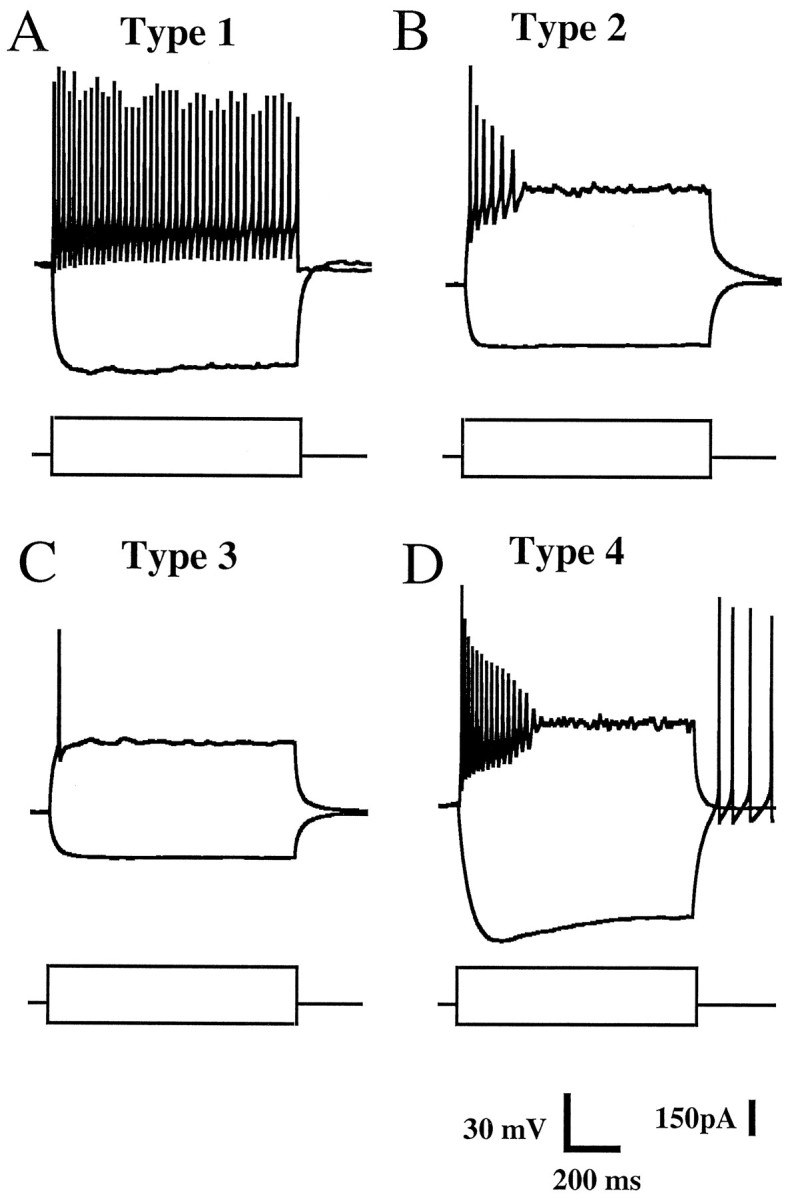Fig. 2.

Electrophysiological characteristics of cultured superficial DH neurons. The recordings were obtained with the perforated patch-clamp technique in the current-clamp mode. Each panel shows two typical voltage traces obtained in response to a hyperpolarizing (−100 pA) and a depolarizing (+180 pA) intracellularly applied square current pulse (bottom traces) lasting 900 msec. A, Type 1 neurons were characterized by a tonic firing pattern in response to depolarizing current pulses; Vm = −61 mV. B, Type 2 neurons responded to depolarization with a burst of action potentials; Vm = −72 mV. C, Type 3 neurons fired a single spike at the onset of depolarizing current injection; Vm = −72 mV.D, Type 4 neurons displayed tonic firing for moderate depolarization and spike accommodation for stronger depolarizing currents pulses. These neurons were characterized by the presence of a time-dependent, inwardly rectifying current revealed as an initial sag in the voltage response during the application of hyperpolarizing current pulses. This hyperpolarization was eventually followed by spikes induced by a depolarizing overshoot when the membrane potential returned to the resting potential value; Vm = −57 mV.
